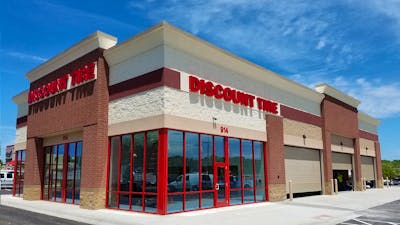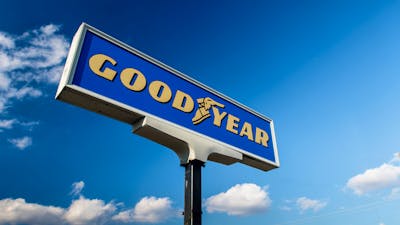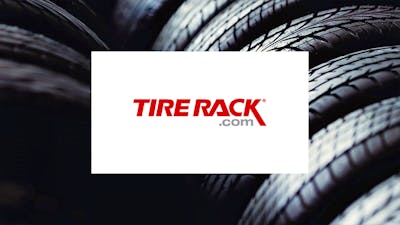Best Tires for the Toyota Corolla
The Toyota Corolla is one of the most dependable and popular vehicles on the road today. It’s not hard to see versions of the car that are several model years old still cruising around as if they were brand new. Even so, certain parts of the Corolla have to be replaced just like any other vehicle, reliable or not. Tires are the biggest and most obvious wear item that needs to be replaced semi-regularly.
Get the Best Deals on Tires
Have an older Toyota Corolla? See tire sizes for previous years.
Best 15-inch Tires for the Toyota Corolla (L, Hybrid LE)
- Hankook Kinergy ST - Best budget tire
- Michelin Defender T+H - Best mid-priced tire
- Michelin Crossclimate+ - Best superior tire
Best 16-inch Tires for the Toyota Corolla (LE, XLE, Hybrid SE)
- Sumitomo Touring LS T - Best budget tire
- Goodyear Assurance Fuel Max - Best mid-priced tire
- Michelin Primacy MXV4 - Best superior tire
Best 18-inch Tires for the Toyota Corolla (SE, XSE, Hatchback XSE)
- Kumho Ecsta LX Platinum - Best budget tire
- Continental Purecontact LS - Best mid-priced tire
- Michelin Primacy A/S - Best superior tire
Shop Tires Online and Save
Online tire prices are usually less than in store

What Tires Are on My Corolla?
The 2020 Corolla sedan comes in six different trims: L, LE, Hybrid LE, SE, XLE, and XSE. The Corolla Hatchback comes in either SE or XSE trims. Depending on the trim, your Corolla could have one of three different wheel sizes:
- The Corolla L and Hybrid LE come with 15-inch wheels and P195/65 R15 tires. These could be Firestone FT140 Grand Touring All-Season tires or Yokohama Avid GT tires from the factory.
- The Corolla LE, XLE, and Hatchback SE come with 16-inch wheels and P205/55 R16 tires. These could be Firestone FT140 Grand Touring All-Season or Dunlop Enasave 01 A/S tires from the factory.
- The Corolla SE, XSE, and Hatchback XSE all come with 18-inch wheels and P225/40 R18 tires. The car came with Dunlop SP Sport 5000 Symmetrical tires, Michelin Primacy A/S tires, or Yokohama Avid GT tires from the factory.
Top Tire Replacement Brands for Your Toyota Corolla
For each stock wheel size, we’ll provide a recommendation for a Budget, a Moderately Priced and a Cost-No-Object replacement tire
Toyota Corolla L and Hybrid LE
The small 15-inch tire and wheel size opens up a world of affordable tires from nearly every major brand.
- Budget: Hankook Kinergy ST - The Kinergy ST is a highly rated touring all-season tire that provides a long tread life rating and good all-weather traction. They’re cheaper than the original equipment tires, as well.
- Moderately Priced: Michelin Defender T+H - For just a few dollars more than the stock tire, you can upgrade to the Defender T+H, a solid touring all-season tire with long tread life and strong consumer reviews.
- Cost-No-Object: Michelin Crossclimate+ - Though they’re nearly the most expensive tires you can buy for your Corolla, at $132 each, the Crossclimate+ is the most highly-rated tire in the 15-inch size.
Toyota Corolla LE and XLE
- Budget: Sumitomo Touring LS T - Sumitomo makes good tires at an incredible price, and for under $80 each you can replace your Corolla’s tires with the Touring LS T. It’s got a solid tread life rating and good consumer reviews.
- Moderately Priced: Goodyear Assurance Fuel Max - The Assurance Fuel Max will help you get the most out of your Corolla’s fuel-sipping powertrain and will cost just over $100 each.
- Cost-No-Object: Michelin Primacy MXV4 - You can spend more on tires, but there’s no need. The roughly $155 you’ll spend on the Primacy MXV4 will get you one of the most highly-rated and longest lasting tires for your Corolla.
Toyota Corolla SE and XSE
The Corolla SE and XSE come with 18-inch wheels, which means that several of the replacement tires you can buy will be performance-oriented. That’s fine if you live in a warm climate, but for everyone else, a solid all-season tire is the best choice.
- Budget: Kumho Ecsta LX Platinum - The Ecsta LX Platinum is a great all-season tire that fits larger wheels. It’s got good consumer reviews, a decent price, and good tread life.
- Moderately Priced: Continental Purecontact LS - The Purecontact LS lands in the middle of the pack in terms of price, but it’s one of the most highly-rated tires you can buy for your Corolla with 18-inch wheels.
- Cost-No-Object: Michelin Primacy A/S - The Primacy A/S is on the expensive side at over $230 each but will deliver long life and good performance in all conditions.
When Should You Replace the Tires on Your Corolla?
Two major factors should be a consideration when deciding to replace tires on any vehicle, not just the Corolla.
Most drivers travel somewhere between 12,000 and 15,000 miles per year, so the tires are much more likely to pass their useful life in mileage before any time-based expiration date rolls around.
The life of your tire can be somewhat predicted by its UTQG (Uniform Tire Quality Grade) rating. Tire manufacturers apply their own grades to tires for treadwear, traction, and temperature. When you’re researching tires online, a UTQG will come up next to the tire name in three digits and a number (ex. 500 A A).
You can glean a bit of info from the tires by reading this rating:
- 500 - The durability rating of a tire, compared to a control tire with a tread life of 100. To obtain a grade, tires run on a 640-kilometer course for 11,520 km. Every 1,280 km, the tread depth is measured, to provide a projected tread life. The higher the number, the longer the predicted tread life.
- A - This is the Traction rating of a tire, which indicates how well a tire stops in wet conditions. The highest letter grade is AA, followed by A, B, and C.
- A - The second letter in the UTQG is the Temperature rating, which indicates how well a tire holds up to extreme heat. A is the highest, followed by B and C.**
The other consideration is time. Each tire has a raised date code on the sidewall. The number begins with the letters “DOT” followed by 12 digits in three four-digit groups. The date code is the third group of four digits. To decipher the date of your tires, the first two digits represent the WEEK the tire was produced, and the second two digits represent the YEAR.
For example, if your tire’s date code is 3217, that indicates the tire was manufactured in the 37th week of 2017, or sometime between September 11 and 17th that year.
Once tires go beyond five years old, it’s time to consider replacing them. Tires are made up not just of rubber and steel or kevlar belts, but chemicals that help the tires resist UV rays, temperature changes and a lot of other environmental hazards. Those chemicals start to break down after five years or so, and the tires aren’t doing the job that they need to do.
Why Not Replace with Original Equipment Tires?
You may choose to replace the tires on your Corolla with the same tires that came from the factory. There’s nothing wrong with that, but you may choose to change the tire or wheel size and type depending on the kinds of driving you’ll be doing.
You only need to purchase ONE set of tires for your car every four years or so, depending on how much you drive. When an auto manufacturer purchases tires, they buy them by the hundreds of thousands. For the manufacturer, the decision to choose a supplier one brand or another comes down to a price point.
For you, your consideration may be completely different. If you could get a tire that stopped 20 feet shorter for an additional $10 per tire over the original equipment, you’d probably do it. Similarly, if there was a tire that provided less road noise or longer tread life for a minimal investment overstock, chances are, you’d probably decide on the slightly more expensive tire.
Changing Toyota Corolla Tire Sizes
You may decide that the wheels on your Corolla need a change, either for appearance purposes or for practical reasons like needing a specific tire size that isn’t available for your current wheels. Whatever the reason, there are a few things to keep in mind when changing your wheel sizes. It’s easy to move up or down in wheel size, but the overall diameter of when and tire together should stay the same. This means that moving up from a 16-inch wheel to a 17-inch wheel is fine, but the tire sidewall size has to decrease to compensate. The same is true in reverse.
Downsizing wheels has its advantages. Benefits include:
- Better ride quality – A fatter sidewall means more cushion for poor road conditions.
- Cost reduction – Large wheel sizes mean that tires are more expensive, so moving to a smaller wheel size will mean less costly tire purchases.
- Seasonal changes – Winter and snow tires are available for a larger selection of smaller wheel sizes, and the narrower footprint will provide better traction.
- Off-road – Many people choose to downsize wheels for off-road use to increase the vehicle’s shock absorption capabilities and bump traction on loose surfaces.
On the other side of the coin, going up in wheel size has its benefits:
- Better handling – Slimmer profile tires make for less rubber to move around.
- Better looks – This one’s subjective, but many people feel that larger wheels look better than smaller wheels with more rubber.
- Better braking – Larger, wider wheels provide a bigger patch of rubber on the ground to slow the vehicle, reducing braking distance.
See our recommendations for the Best Extended Warranty for your Toyota Corolla
How to Read Tire Sizes
When reading tire sizes, it’s important to understand what the numbers mean. The Toyota Corolla LE’s P205/55 R16 all-season tires:
- 205 - indicates the width of the tire from one sidewall to the other in millimeters. This tire is 205 millimeters wide.
- 55 - indicates the aspect ratio, or sidewall height, as a percentage of the tire’s width. In this case, it’s 55 percent or 112.75 millimeters tall.
- R - means radial tires. Radials are the most common type of automotive tire and have fabric woven in at various angles with a tread that is strengthened with additional layers of rubber.
- 16 - indicates the wheel diameter.
Now that you know what comes on the new Altima and how to read the size numbers, let’s look at the different types of tires available to you. Depending on the type of driving you’re doing, where you live, and the weather, you have a variety of choices for tire types:
- Touring and All-season - tires provide a smooth ride, good wet and dry traction, decent winter traction, and longer tread life. These tires are acceptable for winter use but can’t be expected to provide the traction and stopping power than a dedicated winter tire can.
- Performance tires - are focused on providing confident handling, better wet and dry traction, and a sporty feel. Their higher grip and speed ratings come with a tradeoff of shortened tread life and reduced ride quality.
- All-terrain tires - are built to maximize off-road traction and provide good durability overall. Their construction means more noise and less comfort on the road, but winter traction and tread wear are acceptable.
- Winter and snow tires - are made with special rubber compounds that maintain grip and pliability when temperatures drop. They are also built with special tread patterns to maximize the vehicle’s ability to start and stop on very slippery roads.
Tire Sizes By Year
| Year | Trim | Size |
|---|
Shop Tires Online and Save
Online tire prices are usually less than in store














